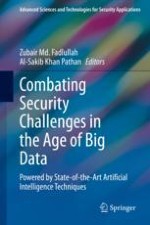2020 | OriginalPaper | Buchkapitel
Deep Learning Meets Malware Detection: An Investigation
verfasst von : Biozid Bostami, Mohiuddin Ahmed
Erschienen in: Combating Security Challenges in the Age of Big Data
Aktivieren Sie unsere intelligente Suche, um passende Fachinhalte oder Patente zu finden.
Wählen Sie Textabschnitte aus um mit Künstlicher Intelligenz passenden Patente zu finden. powered by
Markieren Sie Textabschnitte, um KI-gestützt weitere passende Inhalte zu finden. powered by
